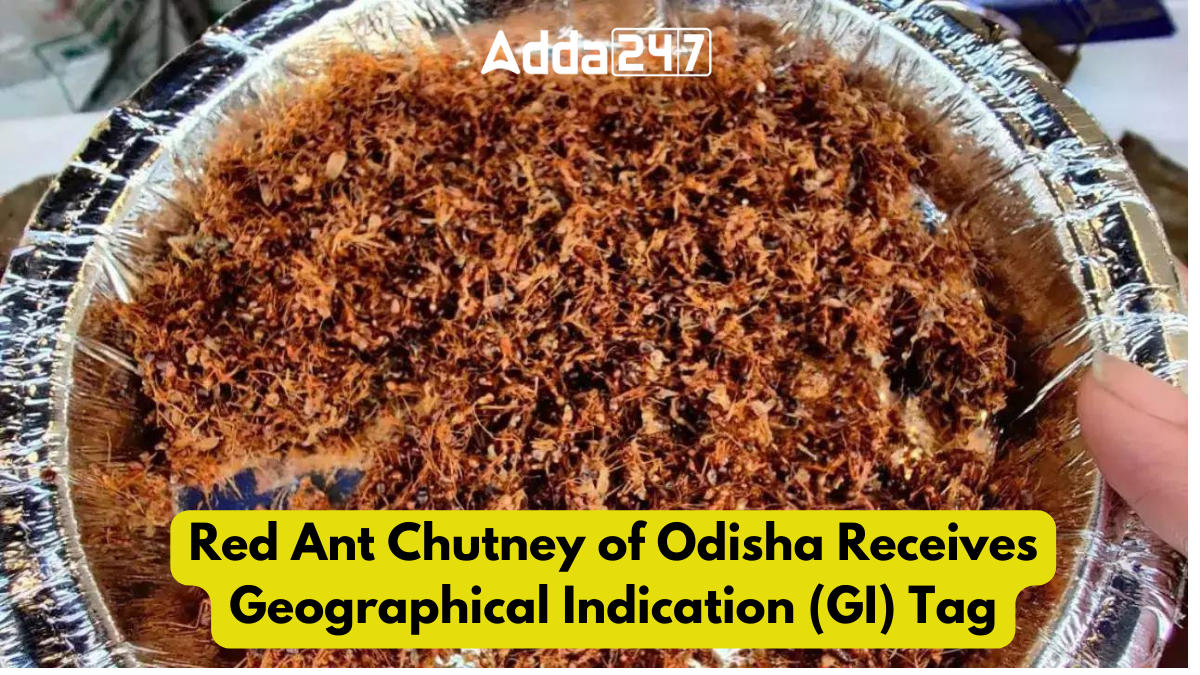In the heart of Odisha’s Mayurbhanj district, a unique culinary tradition has thrived for centuries. Locally known as ‘Kai Chutney,’ this savoury delight is crafted using red weaver ants, scientifically identified as Oecophylla smaragdina. These ants, infamous for their painful sting, are harvested from the lush forests of Mayurbhanj, including the renowned Similipal forests, Asia’s second-largest biosphere.
Distinctive Recognition: Geographical Indication (GI) Tag
On January 2, 2024, the red ant chutney of Mayurbhanj received a significant accolade—the Geographical Indication (GI) tag. This recognition highlights the uniqueness and regional identity of the culinary creation, adding to its cultural and economic significance.
The Culinary Process: From Forest to Plate
Local tribal families in Mayurbhanj have been sustaining themselves for generations by collecting and selling these remarkable insects and their flavorful chutneys. The ants and their eggs are carefully gathered from nests, undergo a thorough cleaning process, and then become essential ingredients for the chutney. A blend of salt, ginger, garlic, and chilies is ground to perfection, creating the distinctive flavor profile of ‘Kai Chutney.’
Beyond Taste: Medicinal and Nutritional Properties
Beyond its distinct taste, the red ant chutney is renowned for its potential health benefits. Packed with iron, magnesium, potassium, calcium, zinc, protein, and vitamin B-12, this culinary creation offers a nutritional punch. Additionally, it is believed to contribute to the development of a robust neurological system and brain, potentially aiding in addressing ailments such as depression, exhaustion, and memory loss.
Sustainable Gastronomy: Insects as a Protein Source
The inclusion of insects in human diets has gained attention in the global discourse on sustainable gastronomy. Studies suggest that insects, such as the red weaver ants, can serve as a more environmentally friendly protein source compared to traditional livestock like cows. With lower environmental impacts, this culinary choice aligns with efforts to create a sustainable food system, addressing concerns related to greenhouse gas emissions.
Beyond Mayurbhanj: Similar Culinary Traditions
While Mayurbhanj takes pride in its red ant chutney, similar culinary traditions can be found in other eastern states of India, including Jharkhand and Chhattisgarh. The widespread presence of these unique creations reflects the cultural diversity and richness of Indian gastronomy.
In summary, the recognition of Mayurbhanj’s red ant chutney with a Geographical Indication tag not only celebrates a culinary tradition but also underlines the cultural, economic, and environmental dimensions of this unique gastronomic delight. As ‘Kai Chutney’ continues to tantalize taste buds, it also serves as a symbol of sustainable and culturally rich culinary practices in the heart of India.
Important Questions Related to Exams
Q1. What is the unique ingredient in ‘Kai Chutney’, a traditional delicacy of Odisha’s Mayurbhanj district?
(a) Bamboo shoots
(b) Red weaver ants
(c) Wild mushrooms
(d) Palm fruit
Q2. When did Mayurbhanj’s red ant chutney receive the Geographical Indication (GI) tag?
(a) January 2, 2024
(b) December 25, 2023
(c) April 1, 2024
(d) June 15, 2023
Q3. What is the scientific name of the red weaver ants used in ‘Kai Chutney’?
(a) Formica rufa
(b) Solenopsis invicta
(c) Oecophylla smaragdina
(d) Camponotus fellah
Q4. Which forest in Mayurbhanj is known for being a source of red weaver ants for ‘Kai Chutney’?
(a) Nandankanan Forest
(b) Bhitarkanika Forest
(c) Similipal Forest
(d) Debrigarh Forest
Q5. What are the potential health benefits of eating red ant chutney?
(a) High in carbohydrates and fats
(b) Rich in vitamins and minerals like iron and vitamin B-12
(c) Low in protein but high in fiber
(d) High in sugars and starch
Kindly share your responses in the comment section.



 UNESCO Expands World Network of Biospher...
UNESCO Expands World Network of Biospher...
 Pench Tiger Reserve Embraces AI for Enha...
Pench Tiger Reserve Embraces AI for Enha...
 Hemis Festival 2024: Celebrating Buddhis...
Hemis Festival 2024: Celebrating Buddhis...
